Ruins of Apadana Castle in Shush, Iran
The ruins of Apadana Castle in Shush, Iran, stand as a testament to the grandeur of the Achaemenid Empire, a pivotal era in ancient Persian history.
Apadana Castle, ordered to be built by Darius the Great around 515-521 BC, was more than just a palace; it was a symbol of imperial power and architectural innovation. Located in the historic city of Shush (or Susa), in present-day Khuzestan Province, this castle played a crucial role as one of the empire's administrative centers.
Apadana Castle's strategic significance cannot be overstated. It served as a winter residence for Achaemenid kings and hosted important ceremonies and gatherings. The palace complex, with its impressive stone walls and elaborate courtyards, reflected the wealth and sophistication of the empire.
Today, exploring the ruins of Apadana Castle of Shush offers a fascinating glimpse into ancient Iranian civilization. As visitors wander through its remnants, they are transported back in time to an era of splendor and majesty, where the legacy of the Achaemenids comes to life amidst the archaeological treasures of Shush.
History of Apadana Castle

The Apadana castle of shush history is deeply intertwined with the rise and legacy of the Achaemenid Empire, one of the most influential civilizations of the ancient world. Under the reign of Darius the Great, who ascended to power in 522 BC, the empire reached its zenith, spanning from the Indus to the Nile. Darius, known for his administrative prowess, ordered the construction of the Apadana Castle around 515-521 BC in Shush, also known as Susa, to serve as a monumental testament to Achaemenid power and authority.
The purpose of the Apadana Castle extended beyond mere residency for Achaemenid kings; it was a symbol of imperial grandeur and a hub for governance and ceremonial activities. The palace complex was designed with intricate architectural features, including vast courtyards, towering columns adorned with elaborate capitals, and a monumental public hall spanning over 3,500 square meters with 36 majestic columns, each about 20 meters tall.
Throughout its history, the Apadana Castle witnessed significant events that shaped the destiny of the Achaemenid Empire. After the death of Darius the Great, the castle experienced periods of restoration and refurbishment under subsequent Achaemenid rulers like Ardashir I and Ardashir II, as documented by inscriptions found at the site. The castle suffered fire damage during the reign of Ardashir I but was meticulously reconstructed to preserve its splendor.
The Apadana Castle of Shush history reflects the ambition and vision of Darius the Great and the subsequent Achaemenid rulers who sought to establish Susa as a center of power within the empire. Today, the remnants of this magnificent structure offer valuable insights into the architectural and cultural achievements of the Achaemenid period, drawing visitors from around the world to marvel at its enduring legacy amidst the ancient ruins of Shush, Iran.
| Related: Cyrus The Great – The Most Powerful King in The World
Apadana Castle Architecture and Layout
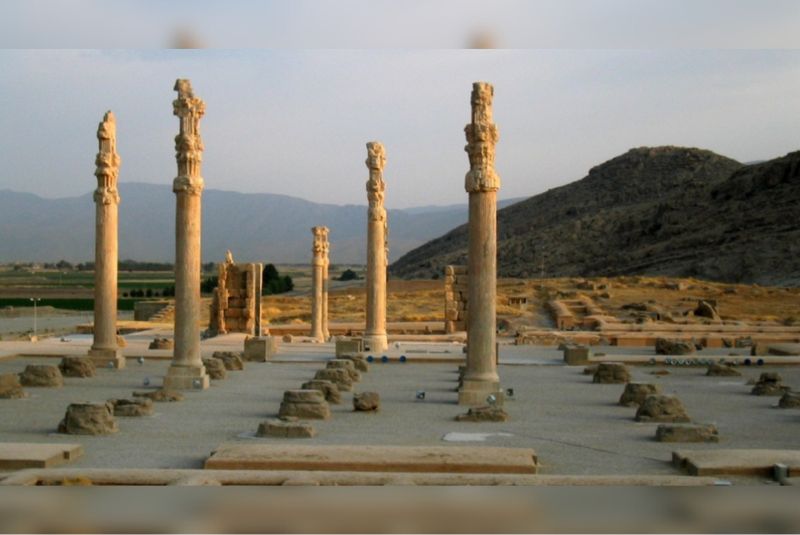
The architectural layout of the Palace of Darius in Susa, Iran, showcases the remarkable ingenuity of ancient Persian design. This vast palace complex spans over 10,000 square meters and consists of six courtyards, each with its unique purpose and layout. The structure is built on an impressive artificial platform, a masterpiece of Achaemenid engineering, which provides a sturdy foundation for the palace's grandeur.
One of the most striking features of the Apadana Castle is its elaborate courtyards. These open spaces were not only aesthetically pleasing but also served functional roles in ventilation and lighting for the surrounding rooms and buildings. The courtyards are adorned with ocher red brick flooring, adding a touch of color to the ancient stone architecture.
The palace's pillars are another standout element. The circular columns, some as tall as 18 meters, are intricately decorated with bases featuring 12-petaled lotus flowers and capitals shaped like two horned cows. These columns, constructed without mortar and held together with lead fasteners, exemplify the advanced engineering skills of the Achaemenid architects.
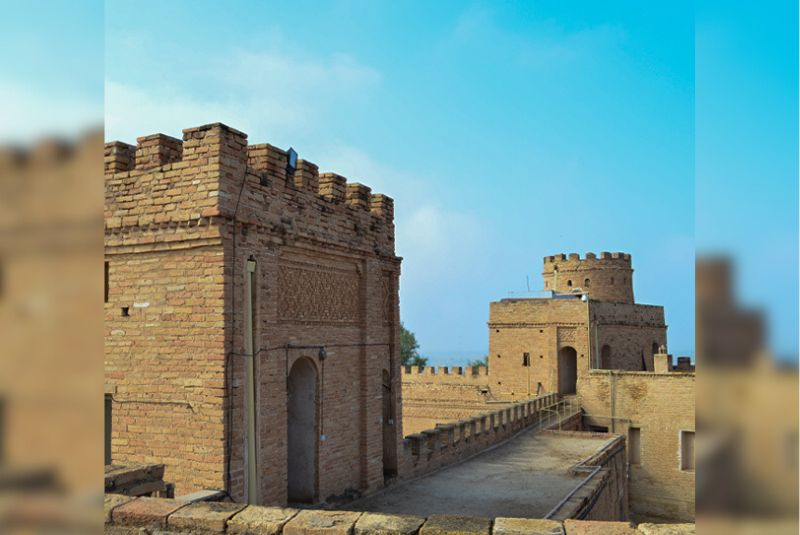
One of the highlights of the Apadana Castle is its monumental public hall, which covers an impressive 3,500 square meters. This hall is supported by 36 columns, each towering approximately 20 meters high. The column capitals, designed with cow-shaped heads, add a unique aesthetic touch to the space. The hall's purpose was likely for hosting grand gatherings and ceremonies, showcasing the might and prestige of the Achaemenid rulers.
Within the Apadana Palace, visitors can also admire the Apadana reliefs, depicting scenes of Achaemenid soldiers, known as the Immortal Corps, and other motifs like lotus flowers and horned lions. These glazed brick reliefs not only served decorative purposes but also conveyed the empire's military prowess and cultural symbolism.
Exploring the Apadana Castle's architecture allows visitors to appreciate the sophisticated planning and artistic mastery of ancient Persian builders. The combination of grandeur, functionality, and symbolic elements in its layout continues to captivate archaeologists and tourists alike, offering a window into the rich history and cultural heritage of the Achaemenid Empire.
| Discover: Elements of Persian Architecture
Apadana Castle Excavations and Discoveries
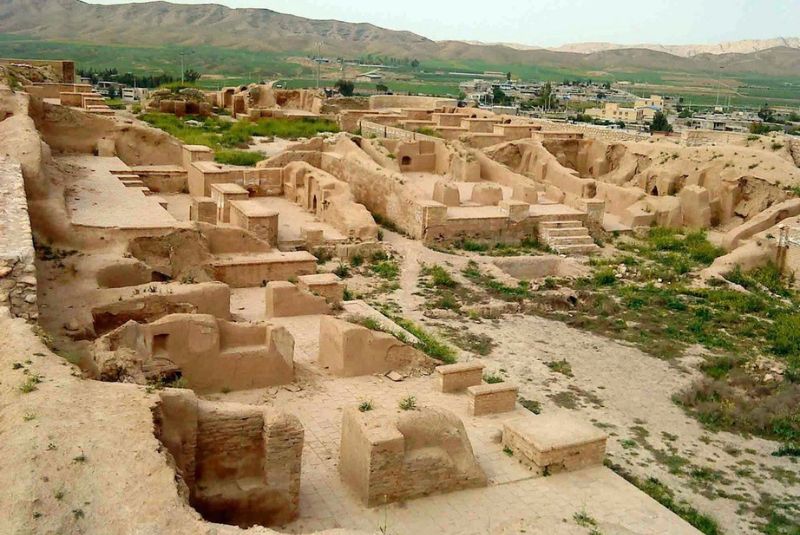
Archaeological excavations at the ruins of Apadana Castle in Shush, Iran, have provided fascinating insights into the history and culture of ancient Persia. The discoveries made during these excavations have been instrumental in deepening our understanding of Iranian history across different eras.
One of the most remarkable findings from the excavations is the Palace of Darius in Susa, believed to have been a significant royal residence within the Apadana Castle complex. This palace, with its intricate architectural features and decorative elements, offers a glimpse into the opulence and lifestyle of Achaemenid royalty. The discovery of the Apadana Palace has enhanced our knowledge of the Achaemenid Empire's administrative centers and the scale of its architectural achievements.
During the excavations around the Apadana Castle in Shush, Iran, archaeologists have unearthed a diverse array of artifacts spanning multiple centuries of Iranian history. These excavations have not only illuminated the Achaemenid period but have also revealed relics from the Sasanian Empire, Elamite era, Islamic era, and possibly even the prehistoric era, according to some experts.
The Sasanian artifacts found in the vicinity of Shush highlight the continuation and evolution of Iranian culture after the fall of the Achaemenids. Additionally, relics from the Elamite era offer clues about the region's pre-Achaemenid history, showcasing the cultural diversity that has characterized Iran for millennia.
Excavations have also yielded Islamic-era artifacts, underscoring the enduring legacy of Iranian civilization through various historical periods. These discoveries contribute to a comprehensive understanding of Iran's past, illustrating the interconnectedness of different cultures and civilizations that have thrived in this region over millennia.
The archaeological excavations at Apadana Castle in Shush have been pivotal in uncovering Iran's rich heritage. Each artifact and discovery adds a piece to the puzzle of ancient Persian history, enriching our understanding of the past and inspiring further exploration and research into this captivating civilization. Also, Each discovery adds a new layer to the narrative of Iran's rich and complex heritage, making Shush a captivating destination for historians, archaeologists, and curious visitors alike.
| Read more: Persepolis City - The Great Ancient Persian Capital
Apadana Palace Decline and Visitor Tips
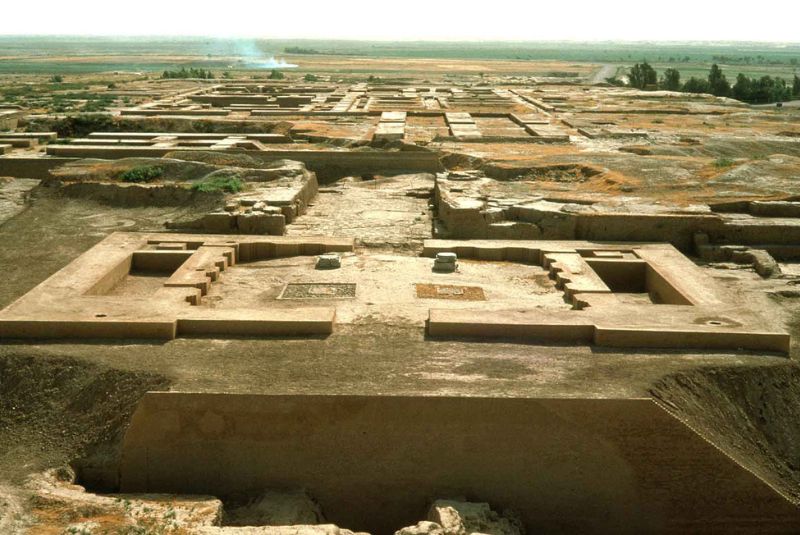
The Apadana Palace of Susa, known also as the Shushan Palace, faced a gradual decline and eventual destruction over centuries due to various factors. One significant cause was the natural aging and deterioration of the construction materials, notably the use of clay in its architecture. Exposure to weather elements and the passage of time took their toll on the palace's structural integrity.
Historical accounts also suggest that the palace suffered damage during the reign of Ardashir I, when a fire broke out, leading to partial destruction. Subsequent restoration efforts during the reign of Ardashir II aimed to revive the palace, but its vulnerability to natural elements persisted.
For tourists planning to visit the Apadana Castle (Shushan Palace) in Shush, Iran, here are some practical tips:
- Location and Access: The castle is located in Khuzestan Province, approximately 40 kilometers from Andimeshk. Accessible transportation arrangements should be made in advance.
- Best Time to Visit: Opt for visiting during cooler months, like spring or autumn, to avoid extreme temperatures, especially during summer.
- Attire and Gear: Wear comfortable shoes suitable for walking on uneven terrain. Carry sunscreen, a hat, and ample water to stay hydrated.
- Entrance Fees and Hours: Check local tourism sources for current admission fees and opening hours. Guided tours might be available for a more enriching experience.
Exploring the ruins of Apadana Castle offers a captivating glimpse into ancient Persian history and architecture, making it a must-visit destination for history enthusiasts and curious travelers alike.
| Suggestion: Bisotun - The Ancient Complex in Western Iran
Apadana Castle Surrounding Attractions
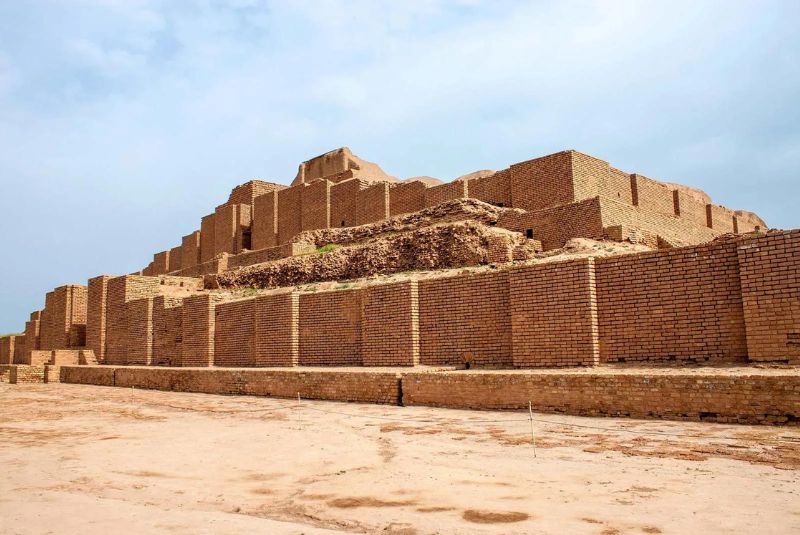
Beyond the captivating ruins of the Apadana Castle in Shush, Iran, visitors have the opportunity to delve into a wealth of historical sites and landmarks that showcase the region's rich cultural heritage.
One notable attraction is the Choghazanbil Ziggurat, an ancient temple dating back over 3500 years. This remarkable structure is considered one of the world's earliest known religious buildings and offers insight into the Elamite civilization's spiritual practices.
Another must-visit site is the Ivan Karkhe, a relic from the Sasanian era located approximately 20 kilometers from Shush. This grand porch, though now partially in ruins, once served as a significant ceremonial site, reflecting the architectural splendor of ancient Persia.
For history enthusiasts, the Susa Museum near the ancient Susa Castle is a treasure trove of artifacts spanning various historical periods. The museum's exhibitions include sculptures, ancient works, and relics that provide a comprehensive overview of Shush's diverse history.
Exploring these surrounding attractions not only enriches the visitor's understanding of ancient Iran but also highlights the interconnectedness of cultures that thrived in this region. From temples to museums and archaeological sites, Shush offers a captivating journey through millennia of human civilization.
Tourists are encouraged to explore beyond the Apadana Castle ruins and immerse themselves in the wonders of Shush, discovering the enduring legacy of Persian history and culture embedded in its landscapes and landmarks.

Finally!
The ruins of Apadana Castle in Shush, Iran, stand as a testament to the grandeur and ingenuity of the Achaemenid Empire. This ancient site, once a splendid royal residence and administrative center, offers a window into Persia's rich history.
Visiting the Apadana Castle allows travelers to step back in time and imagine the bustling life within its walls during the Achaemenid era. Exploring the castle's courtyards, monumental columns, and public hall evokes a sense of awe and admiration for the architectural prowess of ancient Persians.
I encourage readers to embark on their own journey to Shush and experience the magic of Apadana Castle firsthand. Walking amidst the ruins, surrounded by centuries-old history, is a truly immersive and enlightening experience.
As we marvel at these ancient remnants, let us also reflect on the importance of preserving our global heritage. The preservation of sites like Apadana Castle ensures that future generations can continue to appreciate and learn from the achievements of past civilizations. By visiting and supporting these archaeological treasures, we contribute to their safeguarding and the ongoing narrative of human history.
Share your story!
Comment below and let us know about your Experience.
Your story inspires others!


Comment
Leave a Comment